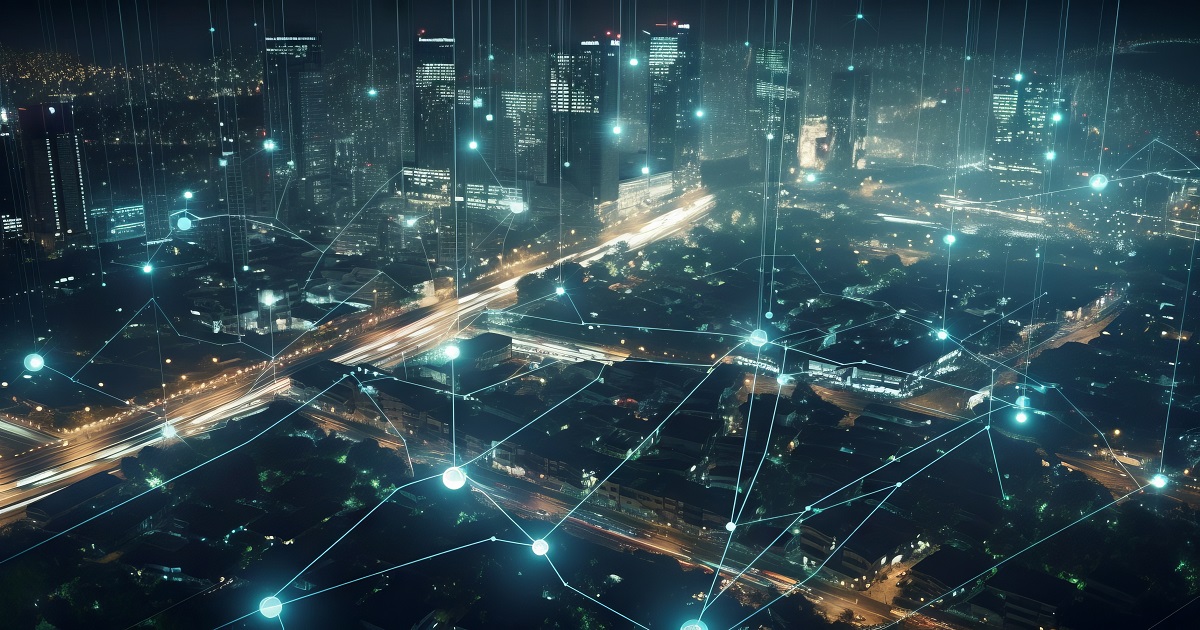
The growth of smart cities – extending rapidly into smart regions, and even smart states in the US – is not slowing down any time soon; in fact, a report from the National League of Cities shows that US cities are incubators for new technology with 66% of cities reporting that they are investing in smart city technology, and 25% of those without any smart city systems exploring how to implement it.
Given the breadth of applications that make up smart cities, the definition continues to change, but there are no truly smart cities without the adoption of IoT and connected sensors, systems, applications, clouds and networks, and the related massive amount of data being generated by growing volumes of sessions.
Of those cities that have invested in smart city technology, the top applications according the National League of Cities’ report include:
- Smart meters for utilities
- Intelligent traffic signals
- E-governance applications
- Wi-Fi kiosks
- Radio frequency identification (RFID) sensors in pavement
Consider transportation-related applications alone. In addition to supporting connected, augmented and autonomous cars, traffic management, emergency response management on roads and highways, public transportation systems, drones and more, smart cities and regions are also now benefitting by and being challenged by the sharing economy, with companies like Lyft and Uber growing faster than originally projected, and bike sharing companies surfacing as well.
Partnership between public and private organizations, utilities and companies has been critical to the success of implementations, facilitating capital generation, technology innovation, and new business models with shared revenues, and the management and governance of all these connected systems, including payments, regulation and compliance is putting increasing pressure on ensuring all this is – secure.
Accenture looks at the next generation of smart cities and regions as an opportunity as huge as a “moonshot” and are out to lead the way in ensuring cybersecurity is a forethought and not an afterthought as more and more implementations are rolled out.
When President John F. Kennedy delivered his historic moonshot speech to Congress he said, “Now it is time to take longer strides, time for a great new American enterprise—time for this nation to take a clearly leading role in space achievement, which in many ways may hold the key to our future on Earth.”
He challenged the nation to a seemingly unimaginable task: putting a man on the moon by the end of the decade.
According to Accenture, three factors made this landmark achievement possible:
- Concerted leadership to drive unprecedented innovation
- A specific call to action to ignite unparalleled collaboration across the public and private sectors
- A sustained investment ensuring continued success
“Nearly fifty years later, the digital revolution is fundamentally changing the ways we interact with each other and experience our lives,” Accenture’s website explains. “As our lives move online, so have a broad range of threats. Today’s cybersecurity measures have been far outpaced by hackers, criminals, and nation states. This needs to change.”
The Cyber Moonshot
Just as Kennedy challenged the country, Accenture and its partners are challenging the US Federal government to “launch a moonshot for the Digital Era, federal cyber leadership at the highest levels” by charting “a clear path to securing the digital landscape over the next five years by taking a number of critical steps.”
This goes beyond smart cities, to the smart grid and other critical infrastructure shared across the country, and without protections, accessible to bad actors in the US and globally.
Gus Hunt, Managing Director and Cyber Strategy Lead, Accenture Federal Services speaks on this, and, as former CTO for the CIA, he brings insight and vision for a way to accelerate federal security in ways that connected communities can benefit from.
“A key part of this journey is addressing the most pressing cyber risk on the horizon: using the Internet of Things against us,” according to Accenture. “We must develop a way to secure the IoT by leveraging the latest technology: Artificial Intelligence and Machine Learning.”
“In a world where the weakest player is the source of a cyberattack, the number of potential threat vectors will also grow to the square of the number of connected devices,” Hunt said, while addressing the Atlantic Cyber Frontier Summit. “Simply put, to harness the full economic value of the ever-expanding digital network, it must be secure.”
The “call to action” includes specific steps, according to Hunt:
- Improve basic cyber hygiene to ensure systems are patched and up to date.
- Accelerate cloud migration work. Look beyond “lift and shift” for opportunities to refactor systems to be cloud-native.
- Identify your “crown jewels” and focus on securing those systems by adopting a data-centric security approach.
- Move to DevSecOps processes and methodologies, bringing IT Modernization and Cyber Security investment streams together in an agile process to ensure needs are coherently addressed.
- Adopt effective and proven proactive defense measures to root out APTs, close the holes, and build a more capable and hardened defense.
- Promote a Security First mindset where cybersecurity is viewed as everyone’s responsibility
Networks in Resilience in Federal Cybersecurity and Smart Cities and Regions
Given the massive amount of sensitive and even personal data that is being shared across systems, the use of secure networks is critical to this “moonshot.”
One company, Dispersive Technologies, suggests that the ubiquitous nature of the public Internet –arguably the most extensive network in the world – makes large-scale smart city projects possible and economical. With technology that was developed working with various government agencies, and now deployed in large scale critical infrastructure networks including the electric grid in the western part of the US, Dispersive’s solution takes inspiration from battlefield-proven wireless radio techniques (spread spectrum and frequency hopping) to establish higher standards for network security and performance.
“Our software-defined overlay network splits session-level streams into multiple flows, encrypts each stream with a different FIPS 140-2 compliant ephemeral key that is known only to the source and destination, and then sends each stream on a different path ,” said Rick Conklin, CTO of Dispersive Networks. “This approach secures the stream from man-in-the-middle attackers who would have to know each key, each path, and how to reassemble the traffic.”
“Our software is ideal for large-scale IoT deployments, especially those that underpin smart cities and smart regions,” said Delia J. Smith, head of marketing for Dispersive Technologies. “Its footprint is really small – small enough to be installed on cameras, drones and other IoT devices. And the software is really powerful – powerful enough not only to protect data from man-in-the-middle hacks, but also to prevent an IoT device from becoming an attack vector for other types of hacks.”
Smith also noted, “As the network becomes more fluid in space and time, this ability to protect the IoT will be increasingly important. We’re looking at a future where billions of devices will collect sensitive and private data from individuals, everything from where they go to what they post on social media to the names and activities of their friends. It will be a future where the weakest link in the network can compromise the benefits of a smart city. It’s vitally important to implement a flexible, software-defined security architecture than can anticipate this future. And that’s exactly what Dispersive has done.”
With private public partnership, in ways we have never seen historically, given the requirement to work within consortiums that bring different capabilities to the efforts (strategy and program management from companies like Accenture, networking software from companies like Dispersive, hardware from companies like Johnson Controls, chips from companies like Intel, clouds from companies like Amazon, and more, “integration and interconnection” supported by the entire community is what is working today and seems to be the roadmap for the future.
Robert Mazer, co-founder of Smart City Works, is expanding their years of work as a non-profit helping to accelerate and actuate collaborative solutions in the IoT space, said “the benefits to society embedded in smart cities and regions are now becoming obvious, not only to lawmakers and agencies, but to the citizens themselves. The movement to make cities safer, cleaner, more efficient, less expensive and more livable is building enormous momentum. But nothing good will happen if we cannot ensure networks, devices, applications and data are secure.”
Smart City Works is a business accelerator operating for the last several years to take the best ideas and inventions in civil infrastructure and technology and “transform them into high-performing growth businesses, that improve the livability, operations, and resilience of cities,” according to the organization’s website.
Their mission is to:
- Identify and speed commercialization of the most promising ideas and companies focused on improving how we design, build, and operate civil infrastructure; ?
- Support business development and growth strategy development for start-ups, emerging companies, and even mature ventures.
- Foster local and regional economic development.
In May of 2018, the sponsored a seminar on digital cities as part of the annual national Infrastructure Week activities in Washington, DC, where the topic of resilient cities was primarily focused around the need to secure everything, from water systems, to the power grid, to public spaces and transportation systems.
One of the keynote speakers, Don DeLoach whose expertise is in the management and security of data, and who is now working with two companies on building more secure IoT deployments using blockchain technologies, said, “There is no confidence when there is no data protection, given the value of critical intelligence, intellectual property and sensitive data given the sophistication of this new generation of cybercriminals. Security needs to exist in every layer of the system, from the edge devices to the network to the clouds and applications that make the value possible.”
DeLoach sees multi-access edge computing (MEC) as a huge part of smart city and smart region success, and said “edge computing is a must, but also means more data will be offloaded for processing closer to the access points and using blockchain as an immutable registry to keep track of billions of sessions, particularly when data is shared across different entities, is a decentralized approach that will scale. It’s proven to work, and we’re committed to finding ways to enhance security of these multi-application, multi-service, multi-party massive projects by bringing blockchain to bear.”
This Does Feel Like a Moonshot
Back to Accenture’s approach, and Hunt’s vision, AI and Machine Learning will also be of great value in smart cities, regions and the IoT in general. “With more artificial and machine learning technologies we can automate more, and develop more predictive security models, learning from data without re-programming machines. We really have to think all of this through together, with cyber resilience embedded into every layer of new systems.
By 2020, over 34 billion devices will be connected to a platform or another device, according to Gartner, and smart cities will drive a big chunk of those devices.
Some estimates predict more than 100 billion by 2025, and with more than 90% of Americans currently using three or more devices, the accompanying flow of data—often highly sensitive—will only continue to grow, including as they engage with everything around them for convenience – and for personal security.
Smart city and regional projects can contribute to that, when we conceive of them holistically.
“It’s about us changing the game in cyber, swinging the pendulum back in our favor, and aggressively attacking the cyber problem to position us on the high ground,” Hunt said in his address at the Atlantic Summit. “It’s about establishing leadership and concerted action to accomplish a goal. And it’s something that I think we have to do now, and we can’t put it off any further. Our intention is to really stop talking about the problem … and then to act coherently to address it.”
Hunt is excited about progress, and while he is not saying it’s not that we don’t have action, “I just think that we don’t have sufficient coherent action that allows us to move aggressively forward in a common direction. We want to set a big hairy audacious goal, of shifting the balance of cyber power in our favor and establishing a secure cyber foundation that we can with confidence build a future on. And it’s about creating real and demonstrable change to make the nation’s data secure, and the nation itself cyber-safe within five years. And that’s the cyber moonshot.”
Edited by
Ken Briodagh





